Charging forward: an EVSE buyers guide
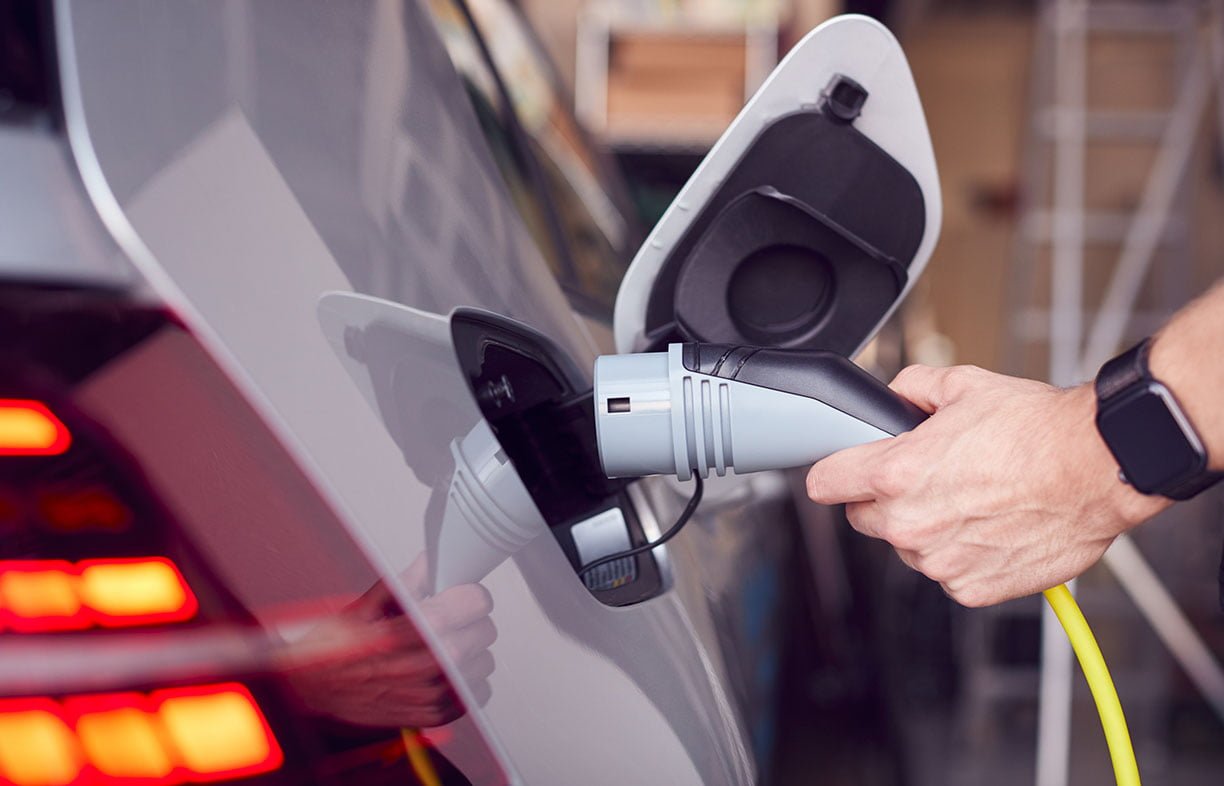
If you are looking to take the big step of dumping petrol and diesel and switching to an EV, then you will need to be able to charge it. Lance Turner looks at the EVSE options available and which might suit you best.
The world is electrifying all forms of transport: trains, buses, and even aircraft. But the most well-known electric vehicles (EVs) are light passenger vehicles: in other words, your own private car.
Electric vehicles—and, in particular, battery electric vehicles (BEVs)—have many advantages over existing internal combustion engine (ICE) vehicles. These include being smoother, quieter, quicker and safer (they have a lower centre of gravity and are far less likely to roll over, for example). But best of all, they require no trips to the stinking petrol station to fill them up with toxic, carcinogenic fuels bought from huge multi-national oil companies that just want to make money, regardless of the environmental and social damage their products cause…
…that is, of course, unless you opted for a plug-in hybrid EV (PHEV), which has a much smaller battery and an ICE to charge it. You can drive a PHEV like a BEV, but the range is much lower and you still have to run the combustion engine regularly to keep it operating in good condition.
Anyway, PHEV requirements aside, if you don’t need to go to a petrol station, how do you charge your EV?
The answer is that most people charge their EVs at home. This can be done in two ways; both require a device known as an EVSE (electric vehicle supply equipment).
What is an EVSE?
So what is an EVSE, and how does it differ from just a regular mains power wall socket?
An EVSE is an interface between the mains power supply and the AC charger in the EV. All EVs have an in-built AC charger that takes AC mains power, rectifies it and converts the voltage to suit the car’s battery pack (which is, of course, DC).
But if the car is charging from mains power and has its own AC/DC charger, why do you need an EVSE?
There are several reasons, and they are critical for safe charging of an EV.
Firstly, the EVSE does a number of safety checks. In particular, it checks that the mains power connection is properly earthed and that there is no earth leakage. Should a fault occur, the EVSE will de-energise the charging cable and disconnect the car from mains power immediately using its inbuilt contactor (a heavy duty relay). This is done to prevent the risk of electric shock to the car owner or damage to the car.
The EVSE also sets the power limit for the EV’s charger. Because the car may be able to draw more power than your power point can safely supply, the EVSE lets the car know how much power it is allowed to draw from the mains. For example, an EV with a single-phase 7 kW (kilowatts) onboard charger can draw 30 A (amps) or so from the grid. If the car was connected directly to a 10 A or 15 A power point, it would try to draw 30 A, which would immediately trip the circuit breaker, preventing charging.
If the car was connected via an EVSE, however, the EVSE would communicate the power point’s ratings to the car, meaning that it never draws more than the mains circuit allows. Some EVSEs require the user to set the maximum power draw; others simply supply a fixed rate of power, such as 10A.
Types of EVSEs
Firstly, we should take a quick look at the way to which charging levels are commonly referred. You may often see charge rates referred to as Levels, such as Level 1, Level 2 etc. This is the American system and is not used in Australia (or, at least, it shouldn’t be). Here, we split charging into four modes, which can be seen in Figure 1.
Mode 1 is simply plugging an on-board charger into a wall socket. While it is seen in electric bikes, mopeds, etc, no commercially available light vehicle EVs use this method, so we won’t look at it further. However, it is the most common method when charging home conversion EVs (ICE vehicles that have been converted to electric drive).
Mode 2 is one of the ways you will charge your EV at home. It consists of a portable EVSE that plugs into a dedicated AC socket (see later for power supply and wiring requirements) and does all the interfacing between the mains supply and the vehicle.
Mode 3 also uses an AC EVSE, but it is fixed on the wall and is hard wired into the home’s switchboard on a dedicated circuit.
Mode 4 is known as DC charging, and is generally much faster than AC charging. In this mode, the EVSE contains a high powered AC-DC charger and charges the vehicle’s battery directly. Charge rates in Mode 4 can be up to 350 kW, although 50 kW to 150 kW is more common. DC chargers are much more expensive than AC EVSEs, and in any case, with such high power charge rates, Mode 4 charging is never used at home. For more information on the different charging rates, see “EV charging on the road” in Renew 151.
So, let’s look a bit more closely at the types of EVSEs.
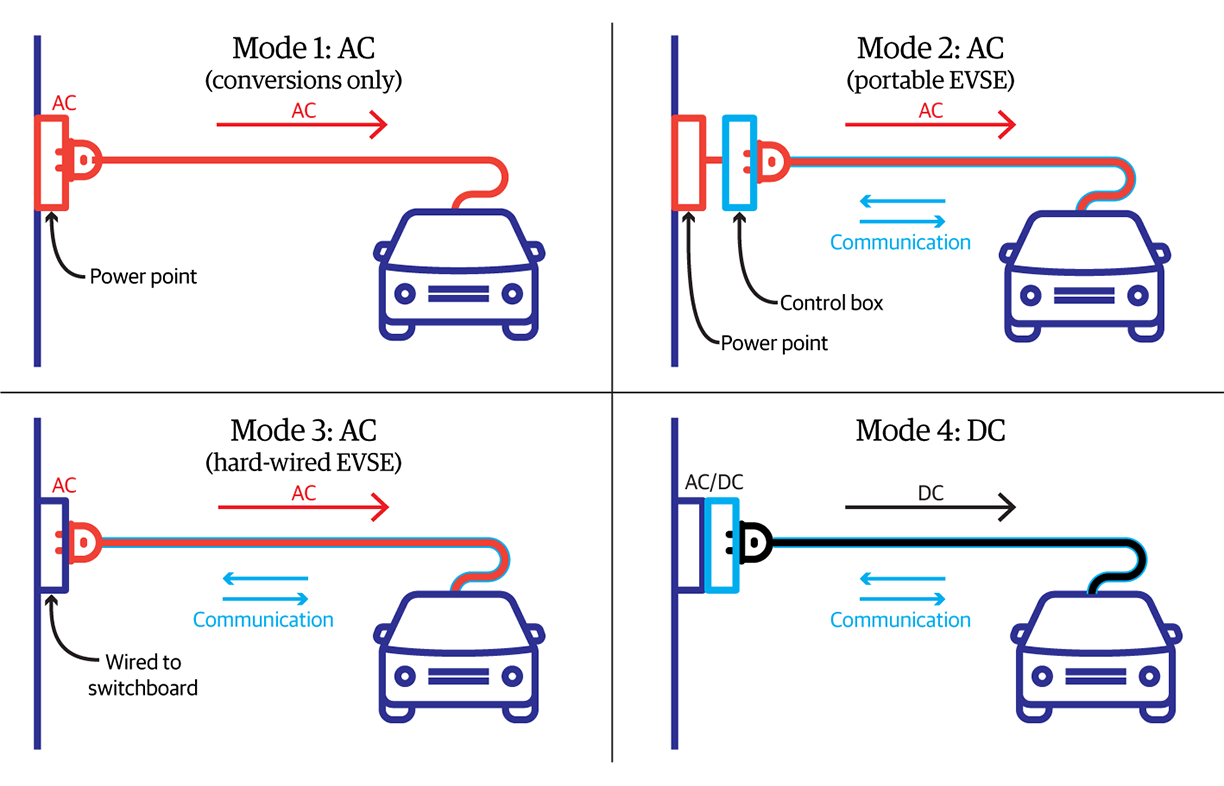
Portable EVSEs
These are generally available as single-phase units with output ranges from 6 A to 32 A (1.5 kW to 7.4 kW). There are some that are capable of using three-phase AC and providing up to 22 kW—for cars capable of that power level, of course.
Single-phase portable EVSEs up to 15 A may come with a regular general purpose 15 A plug to suit a 15 A GPO (general purpose outlet; this is your regular power point style outlet, just with a larger earth pin). Alternatively, you can get them with a heavier duty three- or five-pin industrial-style plug; if you go with this option you’ll require a matching socket to be installed in your garage (or wherever you plan to charge your EV).
The advantage of the 15 A plug is that you can use the EVSE anywhere there is a regular power point available, provided you also have a 15 A-to-10 A converter, such as the AMPfibian mini. This allows opportunity charging when visiting friends or family, for example, or at caravan parks. However, to prevent nuisance tripping of the converter’s in-built 10 A circuit breaker, this is only viable if the EVSE has adjustable current and can be set to 10 A or less, or has a fixed output of 10 A or less. Using a fixed rate 15 A EVSE on a 10 A power point is dangerous and should never be attempted.
EV owners with a portable EVSE will often leave the unit (and any adaptors) in the car, in case they need to charge while out, but if it is your primary charger then most likely you will hang it on a hook in the garage until you need to charge.
Portable EVSEs have some distinct disadvantages over fixed EVSEs. For a start, many are limited in power to, say, 10 A or 15 A, meaning you can’t charge faster than around 3.5 kW. This may sound like a lot, but for an EV with a 60 kWh battery that is down to 20% (thus requiring 48 kWh to charge fully), charging at 15 A rate would take 15 hours or so, and over 20 hours at 10 A. While this is not likely to be a common requirement, if you came home from a road trip with the EV battery low, but needed to drive a good distance the next day, you’d have to look for a DC charger while out on the road to grab some extra charge.
Portable EVSEs with higher power ratings can be quite expensive—a 22 kW portable EVSE can set you back more than a fixed version with similar features, although options here are improving, and portables rated up to 22 kW with basic features at similar prices to a basic fixed EVSE are or will soon be available in the Australian market (keep an eye on Renew’s Products section in future issues for new models).
Another issue is that a portable EVSE is more easily damaged than a fixed unit. While they are quite robust, dropping them regularly onto a concrete floor is likely to eventually cause problems, so you must be more careful with them.
A fixed EVSE will require a dedicated circuit to be installed, so you might think the same is not required for a portable unit—after all, they are designed to be plugged into a regular power point. However, an EVSE will draw the full 10 A from the power point continuously for hours, and in homes with older wiring that may not be in such good condition, this can result in heating at connection points. Older power points themselves can also have worn or tarnished terminals, another source of heating. In an extreme case, this can result in a melted power point (see the box “EVSEs—the electrician’s perspective”).
So, even a portable EVSE should have its own dedicated circuit and socket, regardless of the mains plug it comes with. Indeed, the new Appendix P in the Australian Wiring Rules requires that all EVSE supply circuits should be wired directly back to the switchboard. This new rule also requires that the EVSE circuit be protected by a Type B RCD, which can detect both AC earth leakage and DC earth leakage (from car charger faults). While this type of RCD is more expensive than the ones commonly used in house circuits, many EVSEs have DC earth leakage protection built in, and so only need a cheaper Type A RCD.
So, it’s worth checking that your proposed EVSE comes with DC earth leakage protection, but note that not all manufacturers or suppliers state this function on their websites or datasheets, so you may have to ask about specific models. We have tried to ensure this information is accurate in the tables accompanying this article, but for some models, the data available was quite limited (something manufacturers and suppliers need to work on).
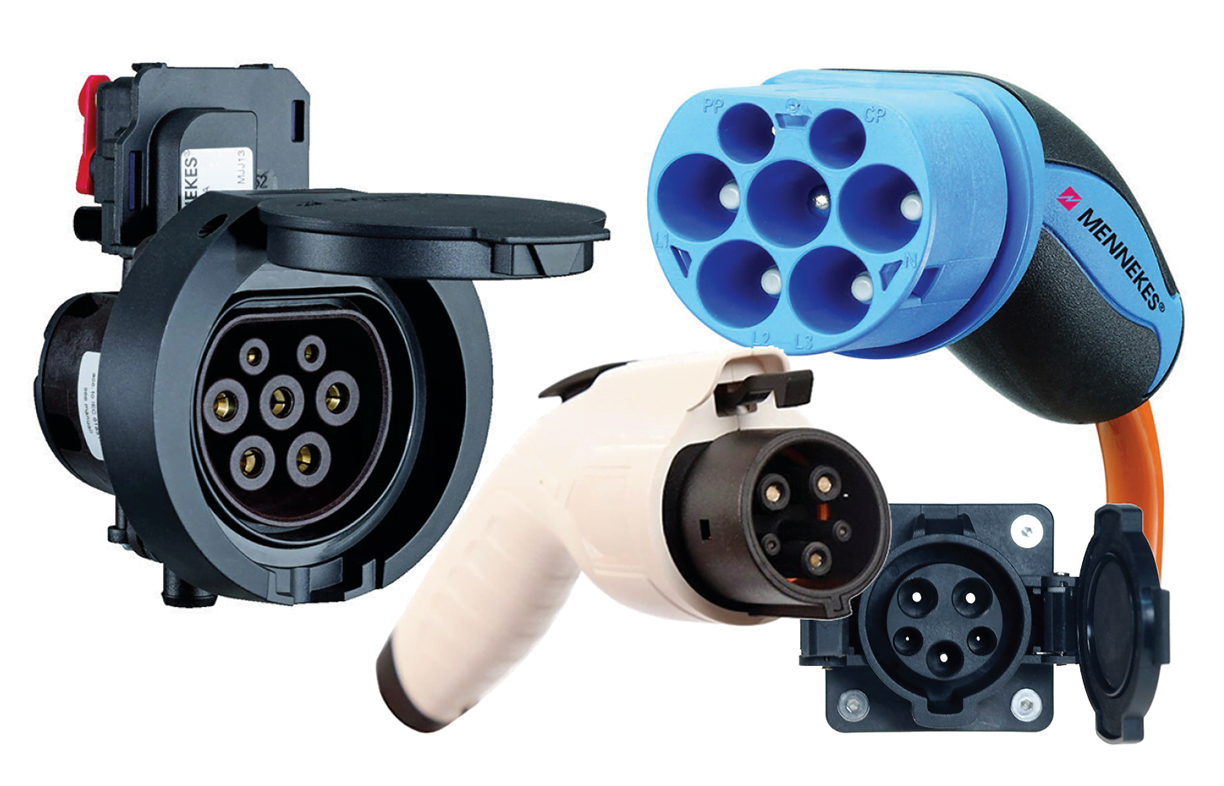
Fixed AC EVSEs
Fixed EVSEs are similar to portable units, except that all of the electronic and electrical gear is inside a box mounted on the wall. This allows them to be wired directly to the switchboard, eliminating the mains power plug and socket issue. Of course, this also means that you can’t take your EVSE with you.
Fixed EVSEs are usually in the range of 7.2 kW for single-phase models, and up to 22 kW for three-phase units.
Fixed EVSEs come with either a tethered EV charging cable (the cable that plugs into the car) or a removable one. A tethered cable is ideal if your EVSE is in the garage and makes for very quick plug-in times of just a few seconds.
However, if you have, for example, an EV with a Type 2 (Mennekes) charging socket (now the standard for all new EVs sold in Australia, even Teslas), and need to plug in an EV with a Type 1 (J1772) or Tesla socket, then you will need an adaptor. (For more on charging plug and socket types, see “Plug Wars” in Renew 141.)
A removable (pluggable) cable on the other hand allows you to remove the cable and take it with you in the car for charging from Mode 3 chargers while out and about (note that Mode 4 public chargers always have their own cables). Many Mode 3 public charge stations are BYO cable, so you will need one in the car, and an EVSE with a pluggable cable means you can save the cost of an extra cable for the car (although most EVs come with this cable as a standard accessory anyway).
A pluggable cable is also the better option if your EVSE is outdoors, especially if it is visible from the street, as it can reduce the temptation to vandals to damage or steal your cable.
| Mode | AC charging options | Max. AC amps | kW | Max. km charged/hr(a) | Hours to 100% charged | ||
|---|---|---|---|---|---|---|---|
| Hyundai Kona | Renault ZE 40 Zoe | Tesla Model 3 LR | |||||
| 2 |  | 10 | 2.4 | 16 | 28 | 18(b) | 32 |
| 2 | 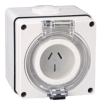 | 15 | 3.6 | 24 | 18 | 15 | 21 |
| 3 |  | 16 | 3.5 | 24 | 18 | 15 | 21 |
| 32 | 7.2 | 48 | 9 | 7.5 | 10.5 | ||
| 16 three-phase | 11 | 73 | 18(c) | 5.3 | 7.5 | ||
| 32 three-phase | 22 | 146 | 9(c) | 2.6 | 7.5 | ||
| DC charging options | Max. AC amps | kW | Max. km charged/hr(a) | Hours to 80% charged | |||
|---|---|---|---|---|---|---|---|
| 4 |  | 75 three-phase | 50 | 270 | 1.3 | N/A(f) | 1 |
 | 525 three-phase | 350 | 1600 | 0.9(d) | N/A(f) | 0.5(e) | |
Notes to Table 1:
All charge listed are estimates only and are not manufacturer endorsed. Please refer to official specifications when purchasing an EV.
a. Assuming 15 kWh/100 km efficiency
b. Renault recommend that the Zoe not be regularly charged at less than a 3.6 kW/15 A charging rate.
c. Kona has a maximum 7 kW (32 A) single-phase on-board charger.
—three-phase 11 kW is 16 A/phase, Kona electric uses one 16 A phase only
—three-phase 22 kW is 32 A/phase, Kona electric uses one 32 A phase only
d. Kona has a maximum DC charge rate of 70 kW
e. Tesla M3 LR has a maximum DC charge rate of 250 kW
f. Renault Zoe ZE40 available in Australia does not have DC fast-charge; it has only 22 kW three-phase AC charging.
Functionality
While portable EVSEs have limited functionality—often just allowing selection of charging current—fixed EVSEs have a lot more features, depending on the model.
Some models are quite simple, and just charge your car, with no bells and whistles. If you don’t care about charge scheduling, or take care of it manually, then a simple fixed EVSE like the Marvin from Evolution Australia should be suitable for your needs. Basic EVSEs generally have the advantage that they are cheaper, often costing under $1000 before installation.
More advanced units have a range of features. For example, they might have a scheduling timer, so that you can plug the car in when you get home, but have the car start charging later at night when tariffs are cheaper. Or you might want to make best use of your excess solar generation, in which case you will need an EVSE that can monitor grid exports, such as the Zappi (although it requires the optional hub) and only charge the car with the excess energy available.
You might also want an EVSE that is compatible with other equipment, such as SMA’s Sunny Home Manager system.
You might also want more than the basic displays that a portable unit provides. Some fixed EVSEs have connectivity options that let you monitor and record data and even control the EVSE remotely.
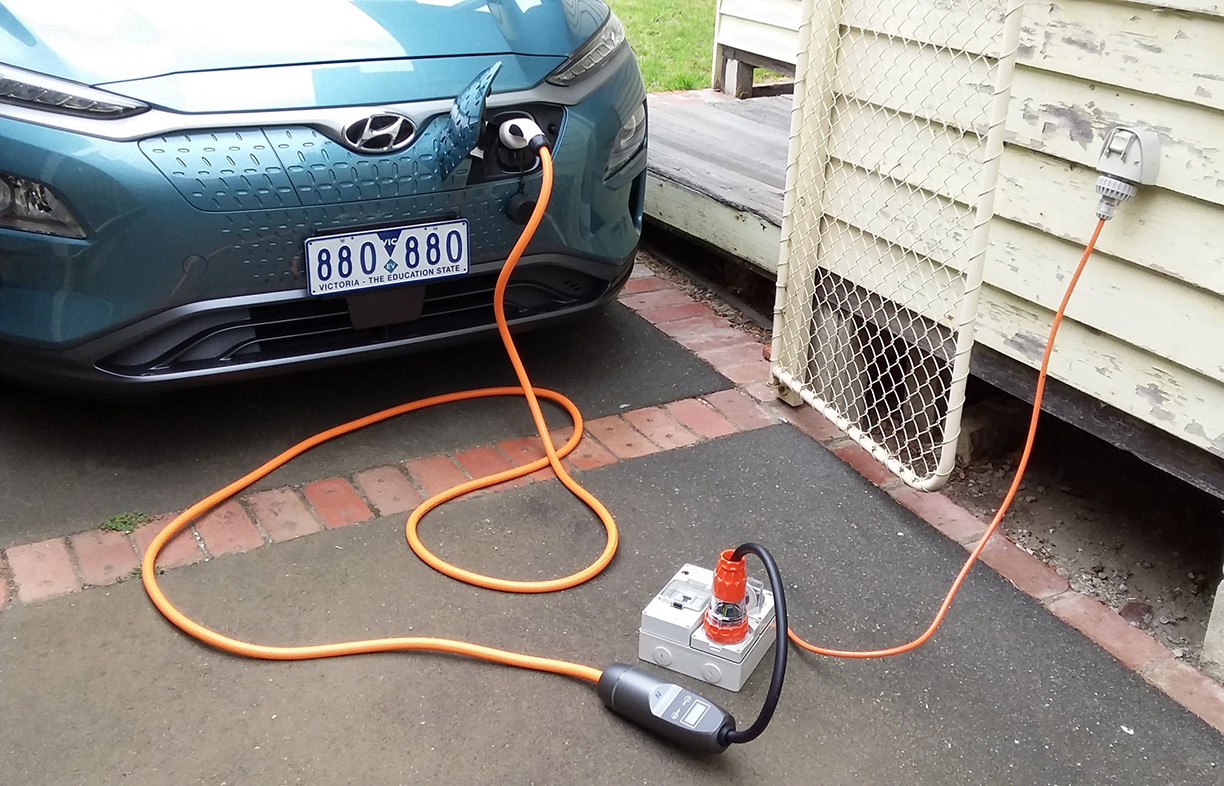
Another feature/function that we may see mandated in the future is that of utility control of EVSEs. This would allow utilities to switch off EVSEs at times of extreme grid load, potentially improving grid stability. For example, imagine everyone arriving home around 6 pm, plugging the car in to charge and also going in to cook dinner on their induction cooktop. This could result in massive additional grid loads, especially on hot or cold days where air conditioning is also turned on. Allowing the utility to delay EV charging until the evening peak has finished will reduce the strain on the grid infrastructure, improving reliability and reducing the chance of brownouts or blackouts.
An example of this is the recent South Australian government proposal to adopt new standards for demand response functionality for appliances such as air conditioners, EVSEs, pool pump controllers and electric storage water heaters.
So far, true “smart” EVSEs are yet to become available, as the communications standard for Australia is yet to be finalised—we hope to look at smart EVSEs in a future article.
We should also mention another aspect of fixed EVSE functionality—safety cutouts. Some EVSEs have a “big red button” on the front or side. Pressing this immediately cuts power to the vehicle. However, even if an EVSE doesn’t have an integrated cutout, an isolator located next to the EVSE is now mandated. An isolator of some sort is required should the car suffer a catastrophic charger failure (an extremely rare event) or the cable or plug sustain damage, such as from an impact, while the car is charging.
Lastly, we should also mention IP (ingress protection) ratings. The IP rating, given in a form of IPXX, where XX is two digits that signify dust and water ingress protection ratings respectively. Any EVSE mounted outdoors must have appropriate IP rating—for outdoor use, the minimum requirement is an IP54 rating, in a sheltered situation, or IP65 minimum for fully exposed locations. For more on IP ratings, see en.wikipedia.org/wiki/IP_Code
A new functionality that will soon be available is bi-directional vehicle-to-grid (V2G), and the variation, vehicle-to-home (V2H). Vehicles with bi-directional V2G capability can supply energy from their traction battery back into the mains grid, provided they are used with a bi-directional EVSE. Note that while V2G means the vehicle can actually feed the grid, V2H only powers the home, with no grid feed. But it’s all a little more nuanced than that—see en.wikipedia.org/wiki/Vehicle-to-grid for a more detailed explanation.
The Nissan Leaf is expected to have V2H capability enabled later in 2021, and other manufacturers are planning or implementing V2H or V2G (or a variation) in the future. (Although the Australian standards for V2H/V2G are yet to be finalised.)
The other variations are listed below. Not all of these variations require connection to a bi-directional EVSE—for example, V2L is done with an inverter that is actually part of the vehicle, with AC GPOs fitted to the vehicle itself.
• V2G: Vehicle-to-grid.
• V2H: Vehicle-to-home
• V2B: Vehicle-to-building/business
• V2V: Vehicle-to-vehicle
• V2X: Vehicle-to-everything
• V2L: Vehicle to load
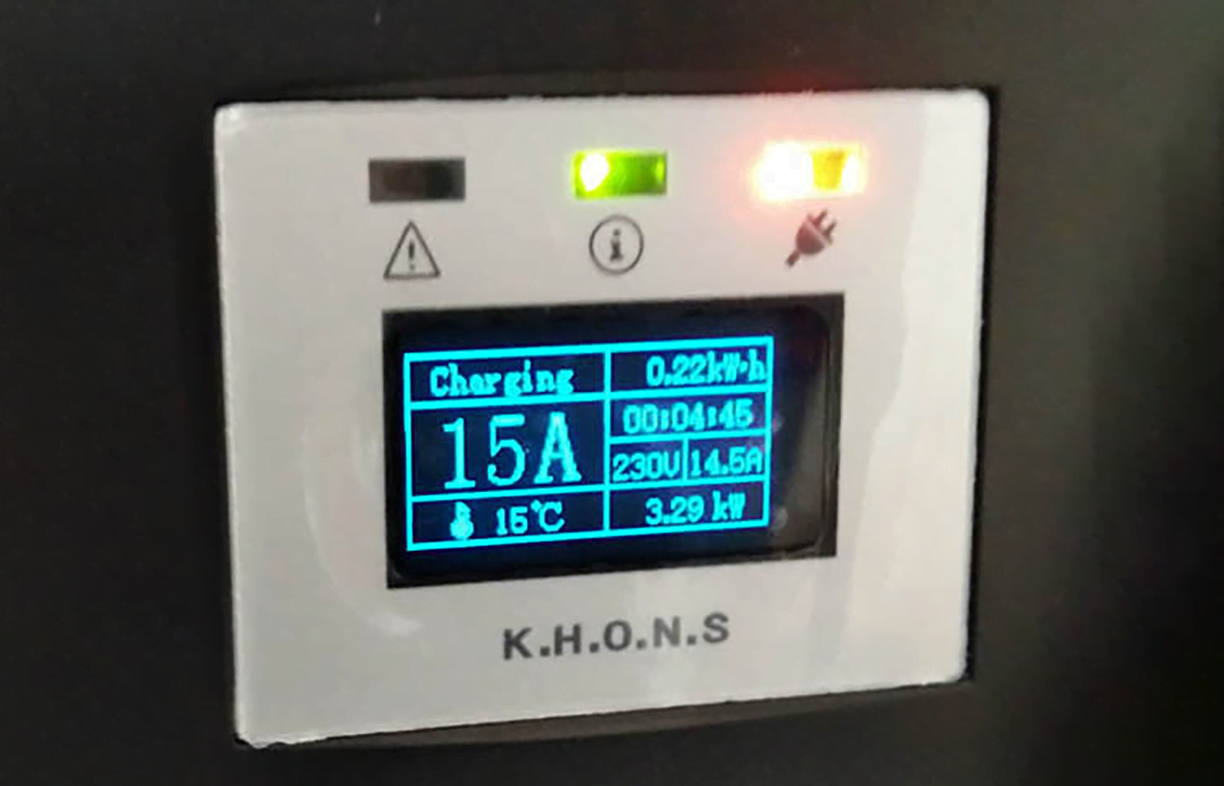
Is it worth getting a fixed EVSE?
So, given that some EVs come with a basic portable EVSE included in the price, is it worth shelling out the extra for a fixed EVSE? The answer is, as ever: that depends. The factors to consider include:
Is the extra cost justified?
A fixed EVSE can set you back over $1000—and that’s not including the cost of installing it, which can vary from under $1000 up to $2000 or more, depending on the work to be done. (And don’t be tempted to try to DIY this one. Anything involving electricity should be done by a licensed electrician.) Compare that to a simple dedicated 15 A socket for a portable EVSE, which can be as little as $600 installed to Appendix P requirements.
How fast do you really need to charge?
For those using their EV mostly for city driving, or in scenarios where they are never likely to need to travel a large part of the full range of the EV twice in consecutive days, then an EVSE with a 10 A or 15 A rating should be fine. This can be covered by the vehicle’s included EVSE (if there is one) or a relatively low cost portable, which usually come in at around $500. Add to that a 15 A socket installation and you may not pay much more than $1100 all up.
If your daily range needs are greater than the 100 km or so that a lower powered EVSE can provide, and your car didn’t come with an included EVSE, then a higher powered portable unit might be the best option. However, if you want all the bells and whistles—or, alternatively, a more robust or simple solution (for example, for ease of use for a less tech-savvy user)—then a fixed EVSE can be well worth the cost.
Which features do you need?
This comes down to personal preference, and depends on whether you just want a simple charging station where you plug in the car and forget about it, or more advanced features like remote monitoring of the EVSE. Wireless connectivity is available on some EVSEs and can be useful in some instances, such as providing an alert should a charging error occur.
So, generally speaking, we would recommend that you install a fixed EVSE if possible. As for the EVSE itself, select one with the features you need and charging rate required (and available from your mains supply) and that falls within your budget.
The risks of importing EVSEs
You might think that you can import an EVSE directly from overseas at a lower cost than those available here, and in many cases, you can. However, there are considerable problems with doing so.
Any unit imported directly most likely will not have Australian electrical certifications, and so cannot be legally wired in to your home. This applies even for units already available here—if they are sold in Australia then they will have undergone additional certifications to ensure they are compliant for the Australian grid, certifications that imported units will not have, even if they are identical.
The lack of certifications means that you are unlikely to find an electrician who will be willing to install them. It can also impact on your home insurance.
Then there is the safety factor. While a good quality imported unit may be as safe as an Australian-purchased unit, there are also many lower cost units that may not have the appropriate safety devices built in. It’s not unusual to find cheap Chinese electrical devices of all types sold though sites like Ebay and Aliexpress with faked certifications and specifications. Examples we have seen in the past include small solar devices with no working solar panel, just a laser printed photo in place of the panel (yes, really), and power supplies without the required electrical isolation between the mains and the extra low voltage output (there have been deaths caused by such devices).
Buying directly from China, you might end up with an EVSE which is supposed to have overload or earth leakage protection when in reality it doesn’t, even though the supplier says it does. There’s no easy way to know for sure, and using such a device would be dangerous. It really isn’t worth the risk.
EVSE supply requirements and considerations
We briefly mentioned EVSE power supply requirements earlier, but we’ll look at this issue in a bit more depth, as it may well have a bearing on the EVSE you install.
- Firstly, you must find out the specifics of your home’s mains grid supply capacity. The house’s supply rating may limit EVSE you can install—for example, if your home has a 40 A connection, then you are not going to be able to install a 32 A EVSE, especially if you have other high-load appliances that might run while the car is charging. So how do you determine the supply rating? There may be information on this in the home’s meter box, and the main isolation switch will most likely have been sized to suit the grid connection capacity. You can also ask your energy company, who may or may not be able to provide that information; if not, you might have to ask an electrician.
- If your home’s mains connection does not allow you to install an EVSE of the power rating you require, you will need to increase its supply rating. This will most likely involve the cost of new a cable from the street connection, as well as some upgrading of your switchbox. These costs are generally borne by the homeowner.
- The current rating of cables must be adequate for the EVSE. Remember that an EVSE draws maximum power for many hours, so cables need to be larger than for intermittent loads, as cables seeing sustained high currents will heat up more. Cables have temperature ratings given by a V number; for example, cables may be V90 rated, meaning that they can operate at temperatures at up to 90°C but that is for intermittent operation, and they will have a V70 (70°C) rating for continuous operation. So cables must be sized to avoid heating past this temperature when operating continuously for long periods. Your electrician should size the cables appropriately. The AEVA (Australian Electric Vehicle Association) advises installing a 6 mm2 supply cable to the carport, even if you only have a 15 A socket at the end. Upgrading later will involve additional costs.
- General purpose outlets are not built for long term high current use. Regular plugging and unplugging eventually weakens them at the clamping points, causing excessive heating which can eventually lead to melting. As such, at the very least, you should fit a 15 A GPO if you plan to use a portable EVSE.
- Separate circuits must be used for EVSEs, but why is this necessary? For example, if you are charging at 10 A on a regular powerpoint on a 20 A circuit, why would you need a separate circuit? The main reason is that, as above, the EVSE draws this current continuously for many hours, which can result in considerable cable heating, especially if other loads are added to the same circuit and/or the wiring is in less than stellar condition. Appendix P of the Australian Wiring Rules requires a separate circuit to eliminate the possibility of overheated circuits from EVSE usage.
- Installation can add considerably to the cost of installing an EVSE if cables have to be run to the EVSE location, especially if they must be run underground. The simplest installation is near the switchbox, with the EVSE mounted on the house to minimise cable runs etc.
- Installing an EVSE is not a DIY proposition unless qualified.
- The potential additional cost to your electricity bill will vary considerably, depending on the car, distance driven, driving style, locally generated solar usage and other factors. However, as an example, for typical car use of, say 10,000 km/year, with a car averaging 150 Wh (watt-hours) per kilometre, the additional energy consumption would be 1500 kWh per year. At 30 cents per kWh, that’s around $450—considerably cheaper than driving an ICE vehicle that same distance. See “EV charging and tariff choices” in Renew 144 on choosing the best tariff for EV charging.
For more information on these and other mains grid supply issues, see “The EVs are coming! The EVs are coming!” in Renew 143.
Considerations before installation
- If you haven’t purchased your new EV yet, you need to find out if your new EV comes with an EVSE of any sort. If so, is it enough for your needs? If the answer is yes again, then you may not need to do anything except get a dedicated power point for charging.
- Beware of dealer-provided EVSE installs—they are generally more expensive than getting it done by an aftermarket EVSE installer (just like all other dealer supplied accessories!). Dealers often also “try it on” by claiming that only their EVSE can be used if people want to maintain the warranty for their car. This is absolutely false, and it might be worth finding another dealer if they tell you this.
- If you have three-phase power available, should you install a three-phase EVSE? You might think this is only worthwhile if your car has a three-phase onboard charger. However, it might be worthwhile regardless—if you have more than one EV that may need to be charged the same day, for example, it may well be worth installing a three-phase unit up to 11 kW if your home has adequate connection capacity. In any case, more EV manufacturers are adding three-phase charging to their vehicles, so even if your current car does not have three-phase charging, your next one probably will. Examples of EVs with onboard three-phase chargers include the Renault Zoe, all Teslas, the BMW i3, the coming Hyundai Kona update, the Kia e-Niro and several others. In general, though, three-phase charging speed is unnecessary for most homes. At 7 kW, all current EVs will charge overnight anyway.
- You will also need to consider where you fit the EVSE on the home—will it be located in the carport, or on the side of the house close to the driveway? While your EVSE maybe be appropriately IP rated, you might want to locate it away from direct weather as this will reduce the chance of water ingress and damage and may result in a longer lifespan.
- While many EVs have the charging port at the front, many also have it on one side of the vehicle. Which side your vehicle’s charging port is on may influence where the EVSE is located.
EVSEs—the electrician’s perspective
By Bryce Gaton
As a long-time driver of EVs, as well as being an electrician, I can say that, in theory, EVSEs are no more complicated to install than an induction cooktop. However, your electrician does need to be aware of the needs and vagaries of EVSE installation.
In some ways, EVSE installation is in a similar position to the early days of solar PV installations, where it was found that installers needed extra support and training to safely and effectively install solar PV systems that met regulations and maximised the benefit to the owner.
Before discussing installing permanent EV charging, I do want to issue one warning based on both my personal and trades experience: do not rely on a standard power point and the EVSE that comes with the car to do all your EV charging. The flat pins in a household plug are quite simply just not up to week-in, week-out high-current use. They were never designed for it and I have plenty of examples of what happens to them if you keep up that sort of punishment.
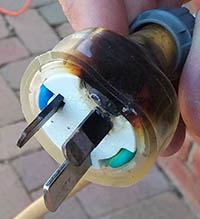
Too much current for too long through plugs and sockets in less than ideal condition can result in excessive heating, resulting in melting and burning.
The EVSE that comes with the car should be treated like a spare tyre—very handy in emergencies, but best left in the boot until needed. If you do want to use a portable EVSE for home charging, buy a second portable one, ensure the outlet you use is installed to Appendix P of the Wiring Rules, and use a screwed socket and plug: that way the plug cannot move or get water into the connections.
When it comes to installing more permanent EVSEs, electricians not only need to be aware of the additional installation requirements for EVSEs contained in Appendix P of the 2018 Wiring Rules, they must do an assessment of the overall wiring condition and supply capacity of the installation before beginning work. As detailed in my article “The EVs are coming! The EVs are coming!” in Renew 143, installing an EVSE without a proper assessment beforehand can result in unexpected, and costly, additional installation work.
It is also important for customers to check their choice of EVSE with the installing electrician before making a purchase. This is for two reasons. Firstly, the EVSE may not suit the selected position or supply capacity. Secondly, EVSEs bought from some overseas marketplaces do not meet Australian Standards and, by law, cannot be installed here.
It should therefore come as no surprise that EVSE installation courses for electricians are currently being set up. In the meantime, I would suggest choosing your installing electrician carefully. At a minimum they should:
- Be aware of the requirements of both Appendix P and the general requirements around the need for equipment isolation switches in the Wiring Rules;
- Include as part of their quotation a full Maximum Demand calculation for your home that includes the proposed EVSE;
- Be able to assess EVSE IP rating needs for selected positions;
- For programmable EVSEs, be able to walk you through the programming process and offer a back-up service to assist with any early difficulties in the set-up; and
- Be aware of relevant electrical tariffs and local restrictions relating to EVSE installations—for instance, EVSEs in parts of Queensland are limited to 4.8 kW unless connected to an off-peak tariff.
Overall, to be able to offer informed advice on how to maximise the benefit of a well-chosen and installed EVSE, electricians installing EVSEs must be aware of the needs and charging attributes of the various EVs (and EVSEs) available on the market here—so choosing one from a business that includes EVs in its fleet may be a good start.
EVSE suppliers
Below is a list of EVSE retailers in Australia. Also note that some general electrical businesses are branching out into EVSE installations specifically, and may stock, or at least recommend, a few of the more popular models.
- Chargers Direct: chargersdirect.com.au
- E-Station: e-station.com.au
- Ecovantage: ecovantage.com.au
- EGen Electrical: egenelectrical.com.au
- E-ride Solutions: eridesolutions.com.au
- EV Hub: ev-hub.com.au
- EV Charge WA: evchargewa.com.au
- Everty: everty.com.au
- EVolution Australia: evolutionaustralia.com.au
- EVSE: evse.com.au
- Fimer: fimer.com/anz
- Gelco Services: gelcoservices.com.au
- Gemtek: gemtek.com.au
- Infinite Energy: infiniteenergy.com.au (Perth)
- Jet Charge: jetcharge.com.au
- Juice Technology: en.juice-world.com
- JuicePoint (NZ): juicepoint.co.nz
- NHP: nhp.com.au
- Sealed Performance Batteries: sealedperformance.com.au
- Southern Sustainable Electric: sse-australia.com.au
- Tesla: tesla.com/au
Download the full buyers guide tables here.
Further reading
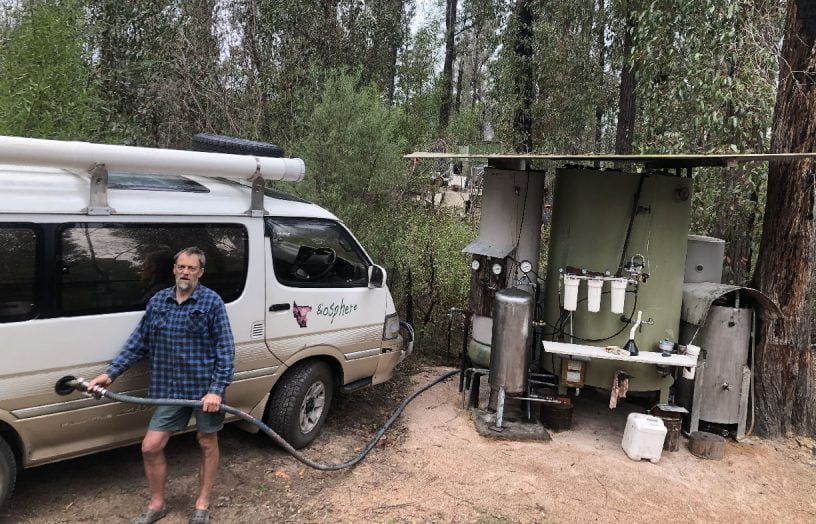 Transport & travel
Transport & travel
Biofuel vs battery
John Hermans gives his opinion on the best power source for electric vehicles.
Read more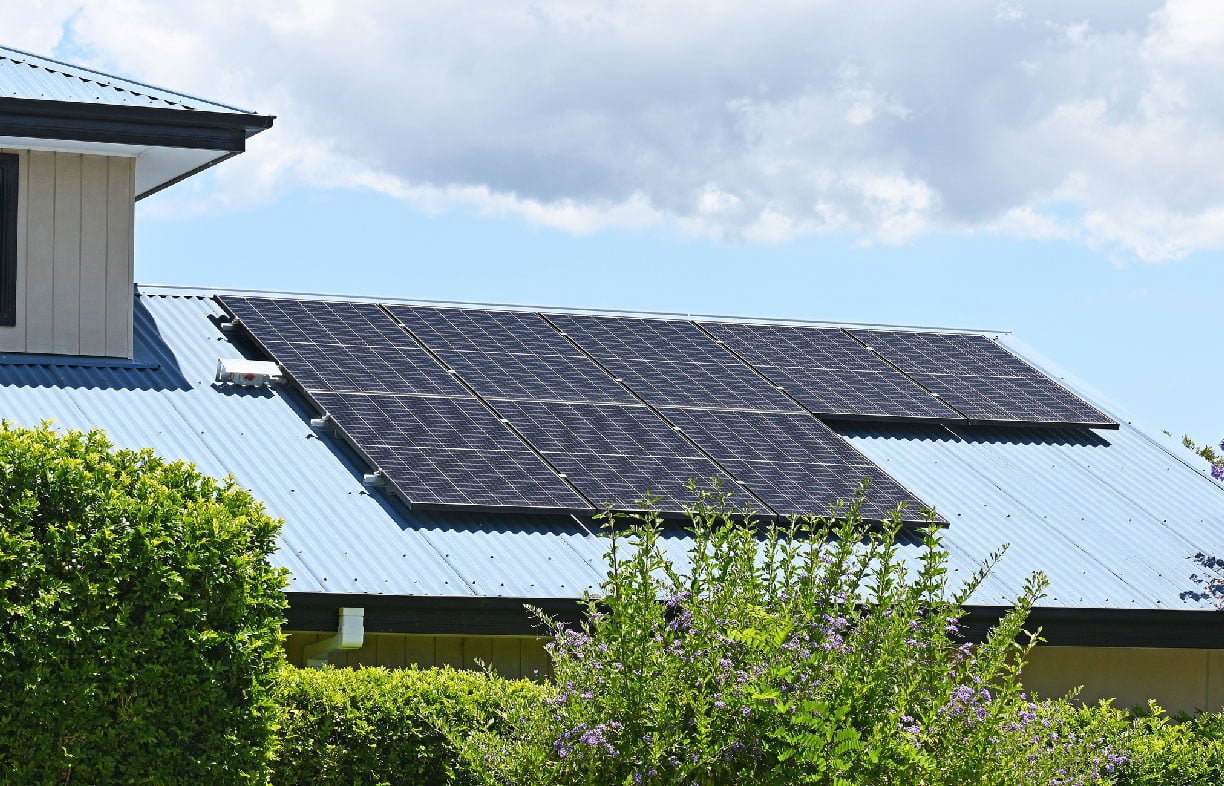 All-electric
All-electric
Direct PV solar hot water buyers guide
Solar hot water can dramatically reduce your water heating costs, but what if your house isn’t suitable for a conventional solar water heater? There is an alternative that can be used almost anywhere you have solar access, as Lance Turner explains.
Read more All-electric
All-electric
Staying warm this winter: A buyers guide to heating
As autumn declines into another long winter, it seems an opportune time to revisit one of our most popular buyers guides: our essential guide to heating yourself and your home.
Read more
